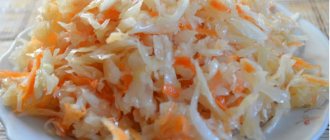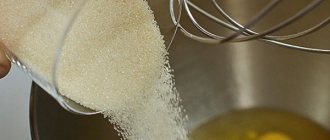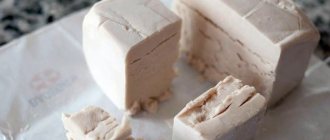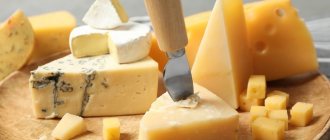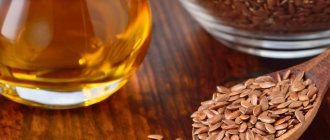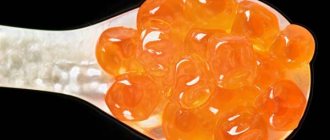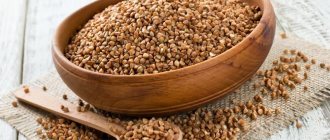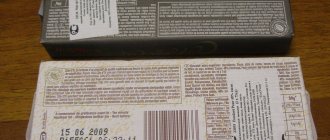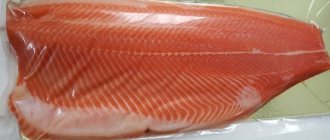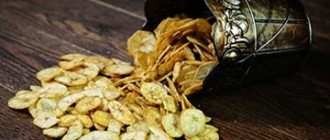On the shelves in grocery stores, along with the usual dairy products, you can also see powdered milk, which differs from the classic one in its powdery consistency. This product has found application in various areas of cooking. It is often used to make bread, whole milk, and sausages. In the field of animal husbandry, this powder is used as animal feed. Many people prefer to use this product due to the long shelf life of milk powder. Let's take a closer look at this product, as well as the features of its storage.
general description
Before answering the question about the shelf life of powdered milk, it is necessary to understand in more detail what exactly this product is.
Dried milk is a dry concentrate (milk powder) obtained from a simple pasteurized drink. The undoubted advantage of this product is that it eliminates various disadvantages of liquid milk. For example, milk powder has a much longer shelf life and is easier to transport to suppliers. In addition, powdered milk retains its excellent composition and contains all the beneficial vitamins and nutrients necessary for the body.
The prototype of this modern product was the milky blocks made by the inhabitants of Siberia. They froze the milk and obtained a concentrated product that was stored for a long time.
For the first time, powdered milk, the shelf life of which will be described below, was obtained by the Russian doctor Krichevsky, who evaporated the liquid for a long time using a special technology, thanks to which all the beneficial properties of the milk were preserved. After several decades, this powder began to be used in cooking, as well as in the food industry. Nowadays, milk powder is included in the nutrition menu of not only adults, but also children.
How long can dry powders be stored?
Many housewives prefer to use milk powder, and all because of the durability and ease of storage. You can take dried milk with you on a hike or travel and not be afraid that it will spoil, because you can open the package at any time and prepare a fresh product.
However, even dry milk powders have storage restrictions, failure to comply with which leads to a deterioration in taste and a decrease in the nutritional value of the finished drink.
What is the shelf life of milk powder when opened at home? This period depends on the type of powder. Whole dried milk product is stored much less than skim milk product because it has fat, which gradually becomes bitter.
It is strictly forbidden to keep good powder in the heat, as it will quickly deteriorate. If you keep dried milk at +20 °C (room temperature), it can be stored for 3 months, and if it is opened, you need to consume the product within 30 days. The powder diluted in water can be refrigerated for up to 72 hours.
To extend the shelf life of whole dairy products, after opening the package, pour the contents into airtight paper or glass containers and place them on the refrigerator shelf. Under this condition, the shelf life of whole milk powder after opening will be 7-8 months, and skim milk – 1 year.
Powdered milk is a dairy product made from natural pasteurized milk by condensing it and drying it in special drying devices. The method is quite gentle and preserves almost all the beneficial properties of the dairy product. Dried milk is widely used in the field of cooking and agriculture for feeding newborn livestock.
Whole
The increased calorie content and long shelf life of whole milk powder are the distinctive features of this product. Powdered milk is a creamy powder of uniform consistency. This product is made from cow's whole milk. It can be dissolved completely without sediment. As a rule, whole milk powder does not have any brown or yellow inclusions; it is easily rubbed in your hands between your fingers.
Shelf life of milk powder
- A product made from skim milk will retain its quality even after 3 years. The main thing is that it is located in a place where the temperature does not exceed +10°C and the humidity is 85%. In this case, milk powder should be stored in hermetically sealed containers.
- The whole powder product will keep for up to 8 months if stored in a cool place.
- In rooms with acceptable humidity levels and temperatures that do not rise above +20°C, powdered dairy products will remain usable for up to 3 months.
- Powdered milk formula intended for feeding babies is stored at +1°C -+10°C for 6 months to 1 year.
- Unscrupulous manufacturers often, under the guise of natural powdered dairy products, impose on the buyer a composition containing preservatives, stabilizers and flavors. The shelf life of surrogate milk powder exceeds 5 years.
If we name the advantages of using powdered milk, first of all it is worth noting that it has a significantly longer shelf life than fresh milk.
If you do not open the packaging, this product can be stored without a refrigerator, and in addition, it significantly saves space due to the compact type of packaging.
Storing powdered milk is not as difficult as storing fresh milk. It does not require a refrigerator or specific conditions. It will not spoil as quickly as fresh. Therefore, in many cases it remains an indispensable product for housewives.
Composition of the product
What is this product made from that makes the shelf life of powdered milk according to GOST so long? The classic version includes only pasteurized whole cow's milk. This raw material undergoes a 5-stage complex procedure of drying and then homogenization, thus maintaining the original composition virtually unchanged.
The finished powder contains a large amount of fats, proteins, lactose, vitamins, nutrients and microelements. There are no additional components in the composition, for example, soy protein, starch, sugar. These products only worsen the taste and quality of milk powder.
What is the shelf life of milk powder?
Now it’s worth talking in more detail about the shelf life of this product. If you follow the storage conditions correctly, the shelf life of powdered milk in bags will be no more than 8 months. Powdered skim milk in metal containers can be stored for no more than 3 years.
You should also pay attention to the fact that the shelf life of milk powder when opened will be shorter than when unopened. If the powder is kept in the heat, it will quickly deteriorate. For example, a dried product stored at an air temperature of 20 degrees can be consumed for only 30 days. Powder diluted in water can be stored in the refrigerator for up to 3 days.
The shelf life of vacuum-packed milk powder will be slightly longer after opening - approximately 7-8 months. It is best to store it on the refrigerator shelf. The shelf life of powdered milk in an airtight glass container will also be about 8 months. As for low-fat, it can be stored in a closed container for one year.
How to store at home
To use the product as beneficially as possible for as long as possible, you need to know how to properly store milk powder at home.
The requirements are simple: the sealed package with SM must be kept in a cool place at a temperature of 1–10 ° C and air humidity up to 85%.
Note to the hostess
If the temperature conditions are violated and the product is stored at 10–20 ° C, then the shelf life of the SM is reduced to three months.
In a closed package
If storage conditions are met, the powder will be usable within:
- 8 months from the date of manufacture (for solid SM);
- 7 months (for low-fat SM).
Powdered milk, both whole and skim, is best placed in the refrigerator in a jar under a tight lid.
The powder diluted in water can be kept in the refrigerator for up to 72 hours.
Opened
After the seal of the package has been broken, the contents must be poured into a dry food container under a tight lid.
Place the jar in a cool place. The side shelf of the refrigerator is best suited for this purpose. There, the powdered milk will retain its original quality for 7–8 months, just like in a closed package.
Note to the hostess
Metallized containers are not suitable because the powdered product may absorb foreign odors and tastes.
How is it made?
The production of this product is carried out in 5 stages at Russian factories. The raw material is fresh cow's milk, which undergoes the following changes:
- First, normalization is carried out, during which the fat content is brought to the average value. For this purpose, the product is mixed with cream or less fat milk. This stage is necessary in order to achieve the correct fat content ratio according to GOST.
- The next stage is pasteurization, which is the heating of raw materials. This process cleans the milk of various viruses and bacteria. Cow's milk is pasteurized briefly, after which it is cooled to the required temperature.
- Cooking or thickening. At this stage, the product is boiled, divided into low-fat and whole subtypes, for which the process differs in parameters and time. If you add sugar to milk at this stage, you can get condensed milk.
- The next stage is homogenization, which is the production of a product of homogeneous composition.
- The final step in making milk powder is drying. During this procedure, the resulting nutritious liquid is thoroughly dried in a special apparatus until it turns into powder without a single drop of moisture.
Useful tips for breeding
Before diluting milk powder with water yourself at home, pay attention to a few useful tips:
- It is undesirable to use cold water for these purposes, since the particles will not dissolve completely, will begin to crystallize and will be strongly felt on the teeth.
- Boiling water is also not suitable for diluting powdered milk, since the product curdles in it.
- After dilution, the liquid must be allowed to stand for a while, since in this way you can achieve an optimal product, not watery and without lumps.
- It is best not to use a mixer for stirring as it creates a lot of foam in the drink.
- The dry powder is added to the water carefully and gradually.
- If you brew natural coffee at home and season it with diluted milk powder, you will get a very tasty drink.
Pancakes with milk powder
A very popular dish among housewives are pancakes made with milk powder. To prepare them, you need to take 1 liter of whole cow's milk, which can be easily obtained by diluting 8 teaspoons of the dry product in one liter of warm water. In this case, you should pay attention to the fact that it is necessary to add dry powder to the water, and not vice versa. Stir everything thoroughly and wait 15 minutes to achieve a homogeneous consistency.
Porridge with dry milk
A very tasty breakfast would be porridge made from milk powder. To do this, you need to take 25 g of milk powder and dilute it in one glass of warm water. This amount yields about 250 ml of a reconstituted drink with a fat content of 2.5%. As a rule, this amount is enough to prepare one serving of porridge.
To make a healthy breakfast for four people, you need to take 120 g of milk powder and 900 ml of warm water. Stir the ingredients continuously until the milk powder is completely dissolved in the water.
It's important to make the right choice
Today, the range of milk-based dry products is quite wide. Available at retail:
- whole milk powder;
- skim milk powder;
- dry powder product based on whey;
- various dry milk mixtures with different percentages of fat content; among them there are also products containing vegetable fats;
- dry milk mixtures intended for baby food.
All these products require appropriate storage conditions, otherwise their nutritional value and organoleptic properties will be irretrievably lost, and dry dairy products will become unfit for consumption. A product that has lost its original qualities will not only spoil the taste and smell of the dish, it can also cause poisoning.
Benefits and harms
As mentioned earlier, the composition of powdered milk is not inferior to a pasteurized natural product. It contains an element such as calcium, which is necessary to strengthen bones. It also contains potassium, which improves the functioning of the heart and blood vessels. Vitamin A, which is part of milk powder, improves vision and overall skin health. In addition, this dry product is useful for rickets, as it contains a large amount of vitamin D. Other beneficial properties of dry milk are as follows:
- The product is prescribed for anemia.
- Potassium contained in milk powder normalizes the amount of cholesterol in the blood.
- Phosphorus and magnesium provide comprehensive support for overall health.
- Choline protects human cells from damage.
- Powdered milk is useful for diabetes mellitus, as well as gastroenterological diseases.
- The composition contains a large amount of vitamin B12 and protein, which are so necessary for vegetarians or people who do not eat meat.
- Powdered milk is well absorbed by the body and does not burden the digestive tract.
- The composition does not contain bacteria, so there is no need to boil the product.
- Powdered milk is a source of proteins that are essential for both adults and children.
As for the harm of powdered milk, it is not so obvious. The powder is not recommended for allergy sufferers or people who are lactose intolerant. Also, this drink should not be drunk by those who have allergic reactions to the components of the product. Those who have a tendency to gain weight should not get carried away with powdered milk. The fact is that the high energy value of powdered milk contributes to rapid weight gain, which is then difficult to get rid of. Therefore, the product is not suitable for people who are on diets.
To summarize, we can say that powdered milk is much more convenient than pasteurized liquid milk. It retains almost the same composition, but its shelf life is much longer, and it takes up less space.
Description of technical requirements
When producing dry skim milk powders, technological instructions, sanitary norms and rules approved in this state standard must be strictly observed.
GOST is divided into spray (obtained by drying in a spray drying unit) and film (to dry milk substances, a roller drying unit is used). The following types of raw materials can be used in production:
- cow's milk grade 2 and higher;
- low-fat dairy products, the acidity of which does not exceed 21 °T;
- Buttermilk obtained during the butter production process.
The current GOST establishes requirements for the taste of milk powder. Thus, spray powders should taste like fresh pasteurized skim milk, and film mixtures should taste like a pasteurized skim milk product.
In terms of consistency, the spray product should be supplied in the form of a dry powder, and the film product should be supplied in the form of a crushed film. The technical conditions of whole milk powder allow for the presence of a small amount of lumps, which should easily crumble when compressed. As for color, the powders should have a white color with creamy shades.
Established physical and chemical parameters of spray and film mixtures:
- fat content: up to 1.5%;
- protein content: from 32%;
- lactose content: from 50%;
- acidity: up to 20 °T;
- tin content: up to 0.01%;
- copper content: up to 0.0008%.
Microbiological parameters of milk powder:
- mesophilic aerobic and facultative anaerobic microorganisms: up to 50,000 units per 1 gram;
- the presence of pathogenic microorganisms (including salmonella) and E. coli bacteria are strictly not allowed in the composition.
5.1 Characteristics
5.1.1 The product is manufactured in accordance with the requirements of this standard, according to technological instructions approved in the prescribed manner, in compliance with the requirements established by regulatory legal acts of the Russian Federation.
5.1.2 In terms of organoleptic characteristics, the product must meet the requirements of Table 1. Table 1
| Indicator name | Characteristic |
| Appearance and consistency | A fine powder or powder consisting of single and agglomerated particles of milk powder. A small number of lumps are allowed, crumbling under slight mechanical stress. |
| Color | White, white with light cream tint |
| Taste and smell | Characteristic of pasteurized skim or whole milk without foreign tastes and odors. The taste and smell of boiled milk is allowed |
5.1.3 In terms of physical and chemical indicators, the product must comply with the standards specified in Table 2. Table 2
| Indicator name | Standard for the product | |
| low fat | whole | |
| Mass fraction of moisture, %, no more, for a product packaged: | ||
| – in consumer packaging | 4,0 | 4,0 |
| – in a transport container | 5,0 | 4,0 |
| Mass fraction of fat, % | No more than 1.5 | Not less than 26.0 |
| Mass fraction of protein in dry skimmed milk residue, %, not less | 34,0 | |
| Solubility index, cm wet sediment, no more, for product packaged: | ||
| – in consumer packaging | 0,2 | 0,1 |
| – in a transport container | 0,2 | 0,2 |
| Cleanliness group, not lower | I | |
| Acidity, °T (% lactic acid) | From 14 to 21 incl. (0.126 to 0.189 inclusive) | |
| Mass fraction of milk sugar (lactose), % | From 47.0 to 54.0 incl. | From 36.0 to 40.0 incl. |
(Changed edition, Amendment No. 1).
5.1.4 The content of toxic elements, mycotoxins, antibiotics, pesticides and radionuclides in the product should not exceed the standards established by regulatory legal acts of the Russian Federation*.______________* Until the introduction of the relevant regulatory legal acts of the Russian Federation - regulatory documents of federal executive authorities [2] and [3].
5.1.5 Microbiological indicators of the product must not exceed the standards established by regulatory legal acts of the Russian Federation*.______________* Until the introduction of the relevant regulatory legal acts of the Russian Federation - regulatory documents of federal executive authorities [3].
5.2 Requirements for raw materials
5.2.1 For the manufacture of the product, the following raw materials are used: - raw cow's milk in accordance with GOST R 52054, not lower than second grade, without feed taste and odor, with an acidity of no more than 18 ° T; - skim milk - raw material in accordance with GOST R 53503; - condensed milk - raw material according to GOST R 53948; - cream – raw material according to GOST R 53435.
It is allowed to use the antioxidant dihydroquercetin with a mass fraction of pure dihydroquercetin of at least 90% in the production of whole milk powder according to the document in accordance with which it is manufactured and can be identified. The maximum level of pure dihydroquercetin in the product is 200 mg/kg of product fat. The raw materials used for the manufacture of the product must meet the safety requirements [1].
5.2.2 It is allowed to use imported raw materials that are not inferior in quality to the requirements listed in 5.2.1 and that comply with the safety standards established by the regulatory legal acts of the Russian Federation*.______________* Before the introduction of the relevant regulatory legal acts of the Russian Federation - federal regulatory documents executive authorities [2] and [3].
5.2.1, 5.2.2 (Changed edition, Amendment No. 1).
5.3 Marking
5.3.1 Labeling of consumer packaging is carried out in accordance with the requirements [1].
5.3.2 The marking of the transport container in which the product is directly packaged must contain the following information: - name of the product; - mass fraction of fat in percent; - name and location of the manufacturer (address, including the country and/or place of origin of the product) and organization in the Russian Federation, authorized by the manufacturer to accept claims from consumers on the territory of the Russian Federation (if these claims exist);
- manufacturer’s trademark (if there is a trademark); - net and gross weight; - batch number; - product composition; - nutritional and energy value; - information on the presence of components obtained using genetically modified organisms (if they are present in quantity more than 0.9%);
5.3.3 Labeling of group packaging and transport containers in which the product is packaged in consumer packaging must comply with the requirements [1].
5.3.4 Transport marking - in accordance with GOST R 51474, GOST 14192 with the application of handling marks, taking into account the type of packaging, conditions and expiration dates.
5.3.1-5.3.4 (Changed edition, Amendment No. 1).
5.3.5 The marking of the transport package must contain the following information: - name of the product; - name and location of the manufacturer (legal address, including country, and, if it does not coincide with the legal address, production address) and the organization in the Russian Federation authorized by the manufacturer to accept claims from consumers on its territory (if any);
- storage conditions; - date of manufacture; - expiration date; - gross weight; - number of units of transport containers or group packaging; - designation of this standard. If the marking on the consumer container, transport container and group packaging is clearly visible during banding, it is allowed Do not apply markings to the side (end) surfaces of the transport package.
We invite you to read: Deadlines for filing a complaint with the FAS
5.3.6 Information data is indicated in Russian and additionally, if necessary, in the state languages of the constituent entities of the Russian Federation, native languages of the peoples of the Russian Federation, as well as foreign languages.
5.3.7 Products sent to the Far North and equivalent areas are labeled according to GOST 15846.
5.4 Packaging
5.4.1 Packaging materials, consumer and transport containers used to package the product must comply with the requirements of the documents in accordance with which they are manufactured, be approved for use in the prescribed manner and must ensure the preservation of the quality and safety of the product during its transportation, storage and sale .
5.4.2 The product is packaged in consumer or transport containers, or in consumer containers with subsequent placement in transport containers.
5.4.3 The formation of group packaging is carried out in accordance with GOST 25776.
5.4.4 Transport packages are formed in accordance with GOST 23285 and GOST 26663.
5.4.5 The transport package is laid out in such a way that the markings of at least one unit of the group package and/or transport container are visible on each side of the transport package. The transport package is laid in ways that ensure the safety of the bottom rows of the group package and/or transport container without them deformation.
5.4.6 Product sent to the Far North and equivalent areas is packaged in accordance with GOST 15846.
5.4.7 Limits of permissible negative deviations of net weight from nominal net weight - according to GOST 8.579.
